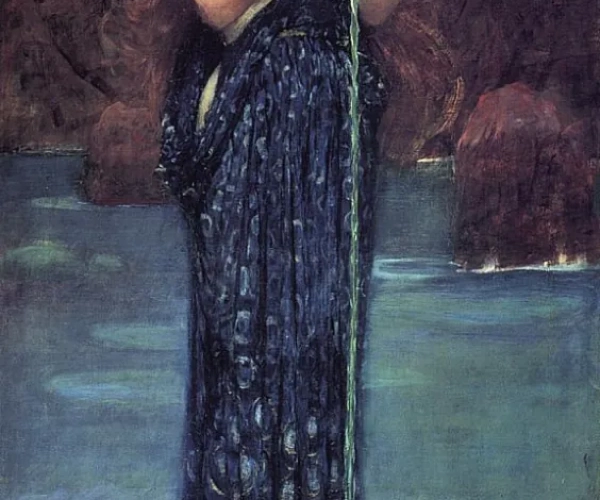Circe Invidiosa 1892
John William Waterhouse's "Circe Invidiosa" in 1892 epitomizes the artist's adeptness at blending classical mythology with Victorian sensibilities. This captivating oil painting, measuring 24 x 36 inches, portrays Circe, a sorceress from Greek mythology, as she gazes venomously at the viewer, her hand outstretched with a vial of poison. The setting is enchanting yet eerie, with lush greenery and a mystical, otherworldly aura. Waterhouse's masterful use of color and light creates a sense of unease, drawing the viewer into the sinister undertones of the narrative.
What sets "Circe Invidiosa" apart is Waterhouse's unique interpretation of Circe's character. Unlike traditional depictions of Circe as a malevolent temptress, Waterhouse presents her as a complex figure, embodying both allure and malice. Her contemplative expression hints at inner turmoil and vulnerability, challenging the dichotomous portrayal of women in art as either virtuous or wicked. The painting's rich symbolism invites contemplation, from the peacock feathers symbolizing immortality to the poisoned flowers evoking danger and temptation.
Waterhouse's meticulous attention to detail is evident in the intricate rendering of Circe's attire and the mesmerizing play of light on the landscape. The interplay of realism and fantastical elements showcases the artist's skill in merging the classical with the contemporary. "Circe Invidiosa" stands as a testament to Waterhouse's ability to infuse timeless myths with psychological depth and emotional resonance, transcending mere decorative allure to provoke introspection and dialogue.







No Comments Yet...